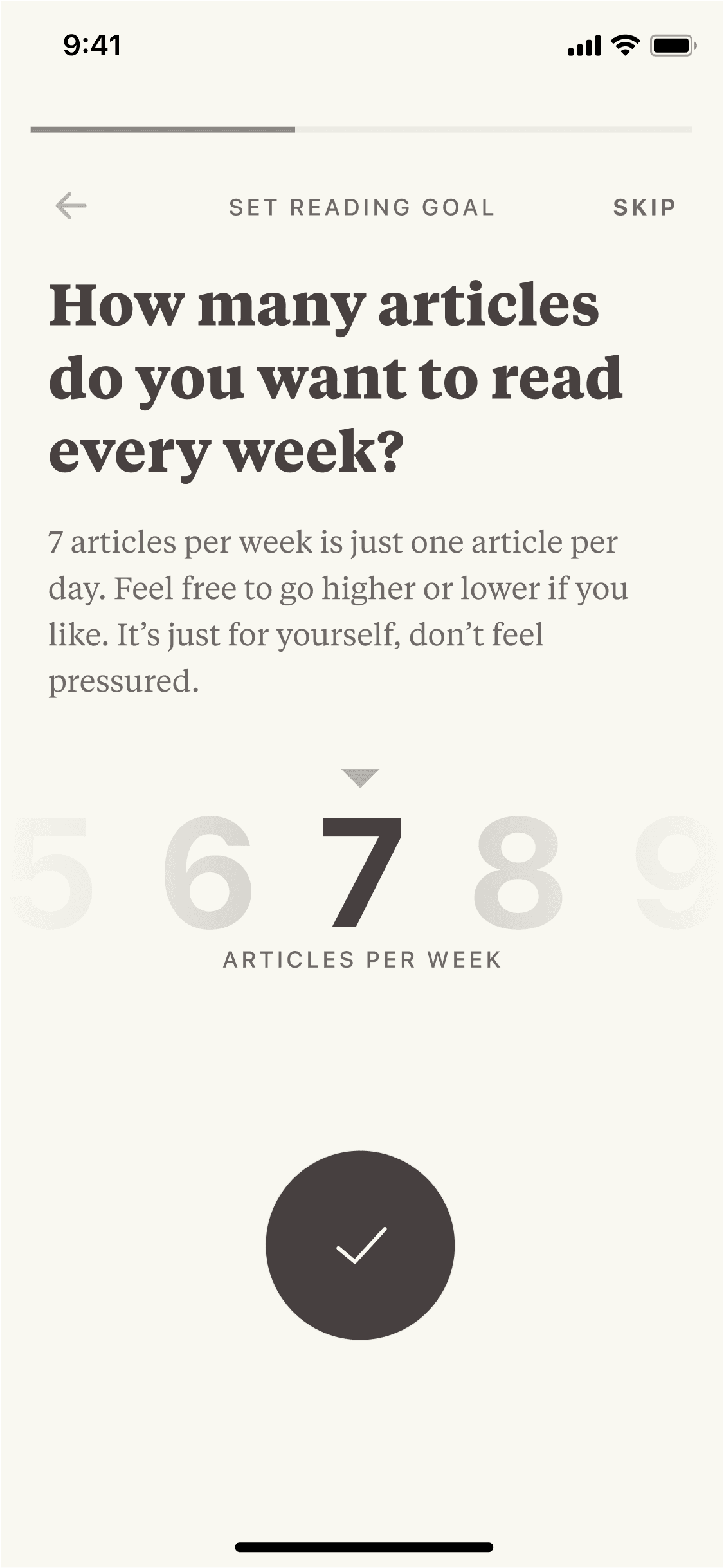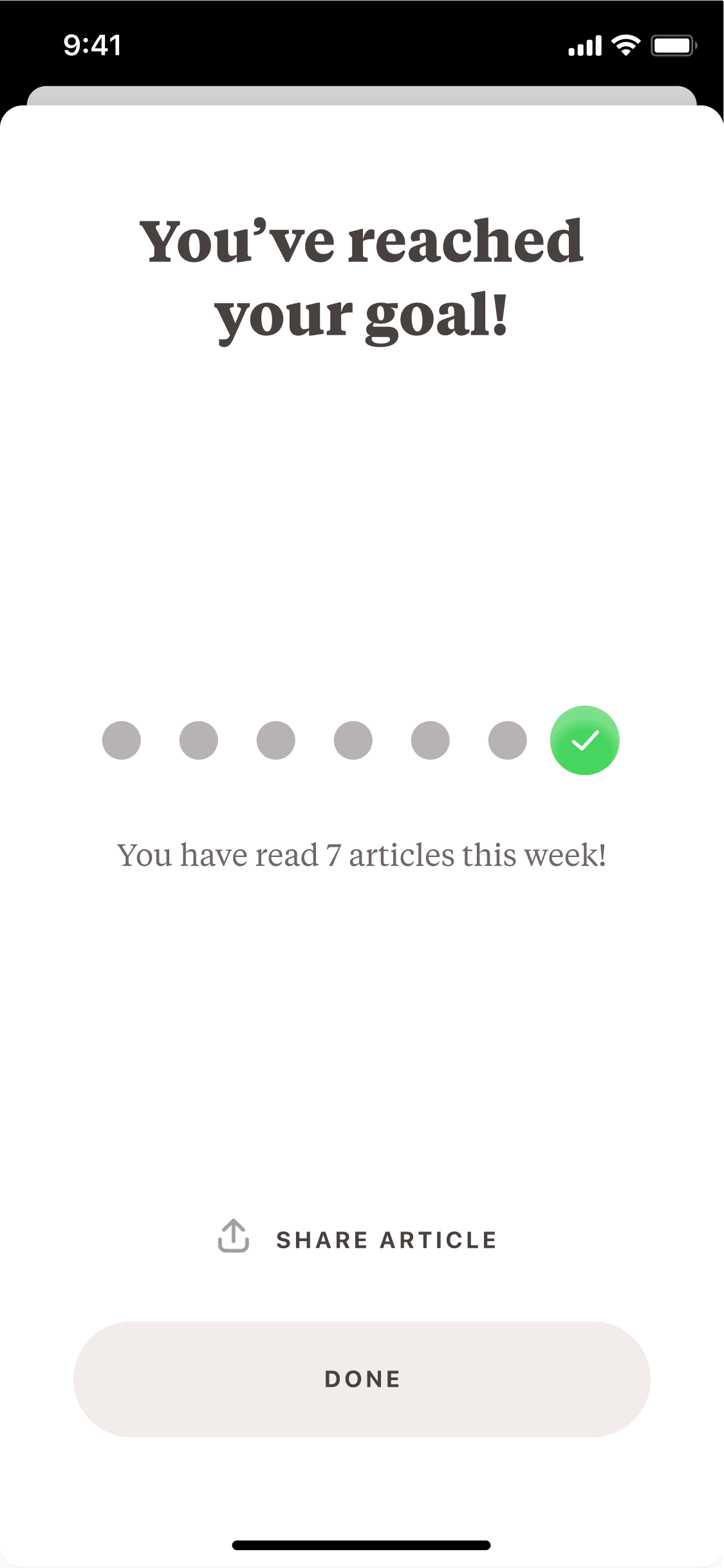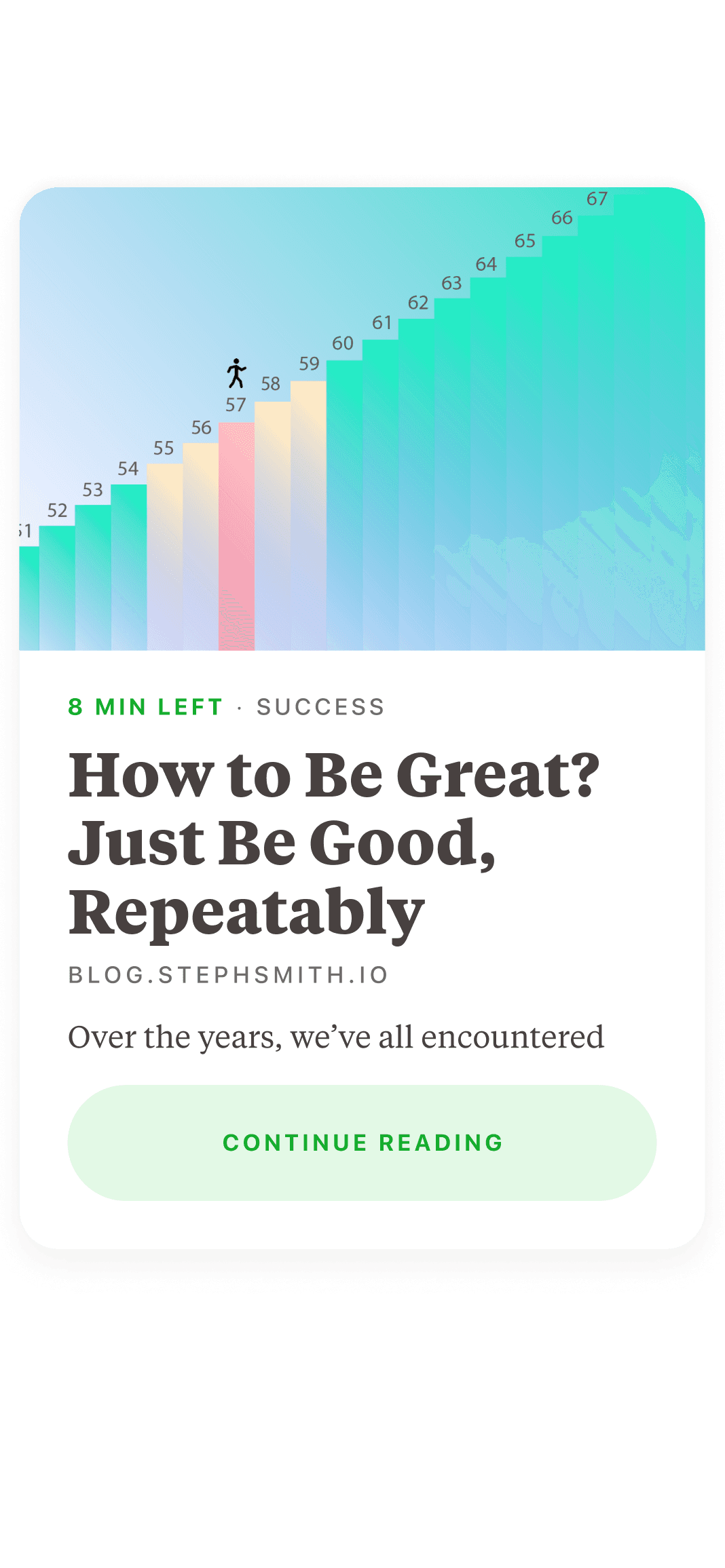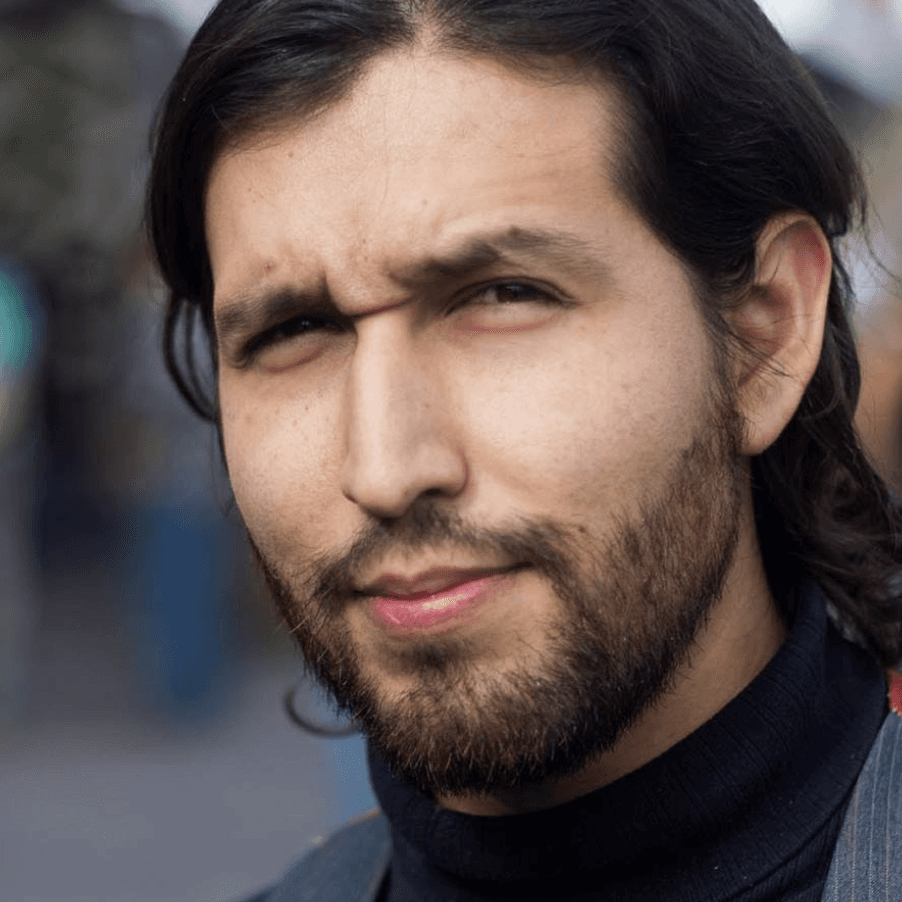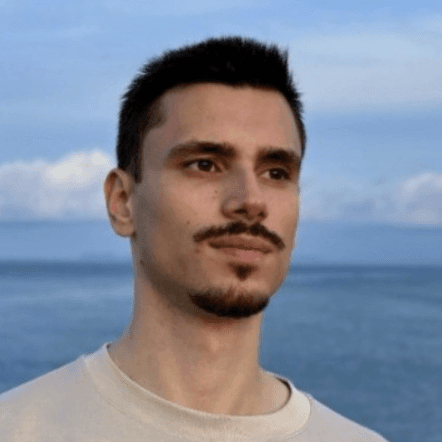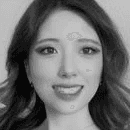Read-later app with a focus on the reading habit
How scratching my own itch led to an app that become Product Hunt's Product of the Week and App Store's App of the Day.
Overview
Impact
8%
27% higher than market median (6.3%)
3.2%
68% higher than market median (1.9%)
71%
Paywall shown
27% higher than market median (56%)
Services
Product Design, Strategy, Research
Role
I partnered with an engineer and led the product, design, and strategy.
Year
2020-2023
Platform
iOS
Inception
What if reading later actually worked?
I used to catch up on saved articles while commuting or flying. No wi-fi, no distractions. Most of what I saved was useful and interesting, and I genuinely enjoyed reading it.
Then the pandemic hit. No more flights, no more commuting. But the articles kept piling up.
Pocket and Instapaper, the two main players in this space, hadn’t changed much in years. Their goal was saving links, not helping you read them. Looking through App Store reviews and online discussions, it was clear there was space for something better.
I decided to solve my own problem and focus on three simple challenges:
Testing the concept
Prototype worth a thousand words (literally)
For the prototype, I decided to focus on existing Instapaper and Pocket users. Both of them have APIs, so it also solves the Cold Start Problem and addresses the challenge of saving but not reading.
I interviewed 16 users over Zoom, asked about their reading habits, and walked them through the prototype. Their feedback helped shape the core of the product.
Core ideas
Turn reading into a habit
I took inspiration from Atomic Habits and Tiny Habits. The goal was to help users create a consistent routine with minimal effort.
#1
Bundle reading with an existing habit
During onboarding, users struggled to pick a time when to be reminded to read. Changing the approach to showing common daily routines instead, resulted in 40% notification opt-in rate.
First iteration
Shipped (40% notification opt-in rate)
#2
Introduce a small goal
Starting small makes it easier to build consistency. Our default goal was just one article per day.
Set reading goal
Reading insights
Goal achieved
#3
Reduce friction when picking what to read
Most apps show you a giant list of unread articles. It’s overwhelming. Alfread shows one article at a time. You read it or skip it. That’s it. No clutter. No guilt.
Keeping it fresh
All hands on deck
Archive, skip, or read now. Find a gem, one article at a time.
I’ve really been enjoying as a way to slowly chip away at my Instapaper queue. There is something powerful about reviewing items one at a time instead of in a long list.
It changes the decision from “is anything here interesting?” to “do I want to read *this* right now?”. Small but significant shift by not seeing your full list at once. Now you can power through the list (or skip) without feeling overwhelmed. Do recommend.
Steven
Super excited about the one article at a time focus - keeps me from getting overwhelmed.
Jimmy
Bonus
First-class reading experience
All the habit-building features would mean little if the reading experience wasn’t great. We focused on making it clean, beautiful, and customizable.
Adjust reading appearance
Reading preferences are often personal. The interface helps users to customize it to their liking.
HIghlight of the day
Users can highlight text and sync with Readwise to revisit the ideas later.
Branding
A friendly butler for your reading list
Naming the app took a few tries. I started with “Readext,” bought the domain, and hated it within a day.
Then “Alfread” came up — a mix of “Alfred” and “read.” It felt right for an app that quietly brings you something to read each day, like a helpful butler.








Landing page
As the app evolved, so did its story. What started as a simple waitlist form turned into a full landing page that clearly explained what users could achieve with Alfread.
Each update to the page helped us sharpen the message, highlight key features, and connect with the right audience.
Version 1.0
Version 1.2
Current version (live preview)
The journey
Building in public and growing the waitlist
Before we even had a TestFlight build, my friend and I started a waitlist. Over 2,300 people signed up.
Each time we pushed an update, we invited 150 to 200 new users, gathered feedback, and shared what we learned in public updates:
I've learned that
Clarity beats cleverness
Users don’t know what’s under the hood. If your product’s value isn’t clear in seconds, it might as well not exist.
Sell before you ship
We sold early access to someone who didn’t want to wait. They paid through PayPal. That one sale gave us confidence we were building something valuable.
Waitlists lose momentum
After a few months, invite into beta install conversions dropped to 25–40 percent. Fast-tracking signups for selected people helped build better relationships and get more feedback than "cold" invites.
Avoid mass BCC from Gmail
One time I sent a group email manually. It was a mess. Stick with proper tools.
The launch
The real treasure was the fans we made along the way
After 18 months of late nights and weekends, we launched in December 2021. The response blew us away.
Alfread became Product Hunt's Product of the Week (wrote how we got here and what it brought here), App Store's App of the Day, featured by Fast Company as one of the best new apps of the year.
Results
Beating productivity apps' median
Alfread runs on a freemium model. Premium features include highlights, full-text search, and advanced stats. According to State of Subscription 2025 report, our metrics outperform the productivity app average.
Impact
8%
27% higher than market median (6.3%)
3.2%
68% higher than market median (1.9%)
71%
Paywall shown
27% higher than market median (56%)
Screen Time stats of an Alfread user

